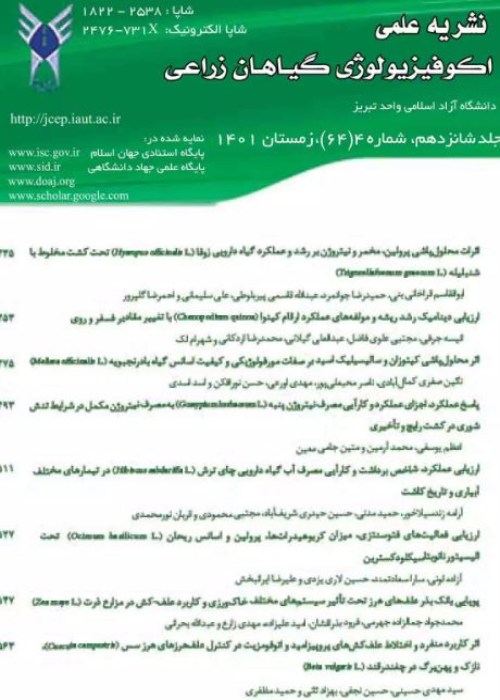Relationships of Phenology and Physiological Traits with the Yield of Rapeseed (Brassica napus L.) in Northern Khorasan
To investigate relationships among physiological traits of 20 rapeseed cultivars, an experiment was conducted at the Research Farm of Agricultural Faculty of Shirvan in Northern Khorasan in Iran, in 2014-2015. The experiment used was a randomized complete block design with four replications. Results showed that there were significant differences among cultivars for seed and biological yield, the number of pod/plant and seed/pod, 1000 seed weight, harvest index, days to germination, seedling, rosette, shooting, flowering time, end of flowering, pod formation time, end of pod formation, seed filling time and physiological maturity among the traits of rapeseed under study. The highest yield belonged to Traviata (513.56 g/m2) but did not have significant difference with Kodiak, Bilbao, L72 and SW102. The lowest yield belonged to Shirali cultivar (344.41 g.m-2) but it also did not have significant difference with Zarfam and Sarigol cultivars. Positive and significant correlation was observed for seed and biological yields, number of pods/plant and seeds/pod, seed weight, harvest index, the number of days to flowering, flowering end, beginning pod formation, ending pod formation, beginning seed filling, plant height and seed filling rate, but correlations were negative between seed yield and seed filling period and day to emergence and rosette. According to stepwise regression, seed yield was considered as dependent variable and other traits as independent ones. Positive direct effects of harvest index and biological yield and also positive indirect effect of biological yield on number of pod/plant and positive indirect effect number of pod/plant on harvest index were the traits that can be used for selection of high yielding genotypes. Path analysis revealed that traits like seed weight and seed number per unit, seed number and seed weight are its determiners of seed yield. The results also showed that seed filling rate is more effect than seed filling period in determination of seed weight. Regression analysis also showed that by increasing temperature, seed filling period was decreased by 1.54 days and seed filling rate increased 0.004 mg/grain.day-1 centigrad-1. Based on these results it could be concluded that genotypes varied significantly for the rate and duration of seed filling.
- حق عضویت دریافتی صرف حمایت از نشریات عضو و نگهداری، تکمیل و توسعه مگیران میشود.
- پرداخت حق اشتراک و دانلود مقالات اجازه بازنشر آن در سایر رسانههای چاپی و دیجیتال را به کاربر نمیدهد.


